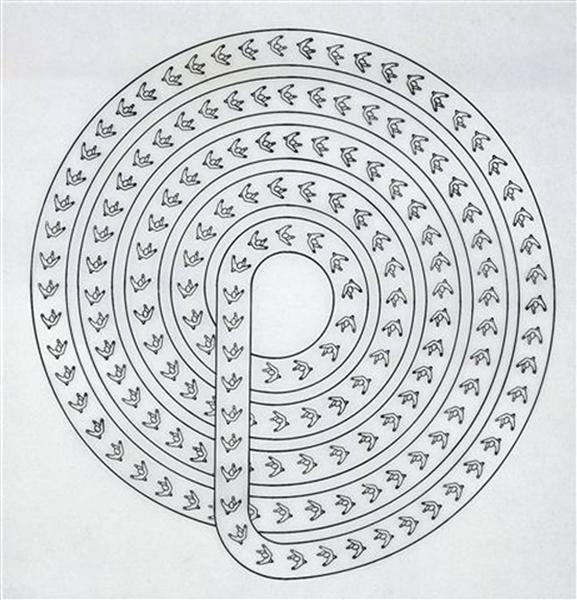When we act on emotions, we are making an effort to change them. Whether to further excite them, or to reduce them or avoid them. We manipulate our environment so that we can restore our emotion to contentment. Emotion regulation is the effort to change one’s emotional or motivational state because of the emotion’s meaning to us. The distinction between mere acting on emotion and emotion regulation is therefore not clear. We have to look further into the process of emotional regulation to sort out the motivations of these actions to know where their origins are.
The regulation of an emotion implies the influence of our self-related goals on the process in which we act on the emotion. Emotions have values that imply potential outcomes which we either want to avoid or we want to continue. We know the obvious meanings of emotions such as fear. Clearly fear cautions us to escape or avoid a threat, but acting according to fear has consequences beyond the obvious, rippling down to values towards other goals (such as becoming braver).
Modifying a situation in the effort to align an emotion or affect with a meaningful or desirable outcome is one way of emotion regulation. But this method is very close and nearly indistinguishable from emotional action itself. Making this distinction requires a certain meditation on the aims of emotional regulation and the meaning behind emotional actions. What can we gain from thinking about emotions as having meanings beyond there present urgencies? What does it mean to act towards emotions at the same time we act towards the world?
Distinguishing Between Action and Situation Modification
Emotion regulation is the effort to control one’s emotion and motivational states to align them with the future goals or goals of the self. Emotion regulation can occur by many different routes. Suppression of the expression of emotion or choosing the right situations to be in are both ways to control how and when we experience emotion. Another way of emotion regulation is situation modification where we make the effort to adjust our situation in order to excite or diminish (regulate) an emotion. From this description, any actions taken towards the emotional situation have the potential to be considered emotion regulation despite their appearance to be ordinary actions.
For that reason, situation modification can be difficult to understand as an effort to regulate emotion because, by its definition, it does not seem different from simple acting on an emotion. For the most part, it is the same: we feel angry, anger is uncomfortable, and we act angrily to reduce the anger by directly expressing it. Most times, when people burst out in anger, we do not applaud them on their ability to regulate the emotion. We usually condemn them and suggest that they need to do better at regulating their anger. Yet, according the definition of regulation of emotion, catharsis or acting on emotion is a way of emotional regulation, because it is a way of changing or diminishing the emotion.
An act of emotion has two objects, the emotion and the situation that elicits the emotion. Emotions have value beyond themselves and when we act, we act towards the meanings the emotion have on us. At the same time, we solve the emotional problem in the external world as a means of regulating the internal world.

This subtle distinction is not a psychologist’s excuse to make up special terms for an inconsequential difference between two elements of a phenomenon. The difference is subtle, yes, but using this vocabulary can help us to understand the complexity of human emotion. By realizing that emotions contain their own value, and acting on them often consults that value, we can see the infinite possibilities of meaning in emotion. Armed with knowledge of this complexity, we can see how an emotion such as anger can paradoxically be both good and bad.
Since this form of regulation merges what are apparently natural actions with regulatory strategies, we cannot confidently claim a purpose of an emotion or motivation. All emotional action may never be pure or without further meaning to them. Always, we have emotion, and an emotion of that emotion. This is similar to the influence of self on our conscious thoughts, where we are never really experiencing unfiltered thinking.
There are no emotions without judgements of their potential to cause good or bad outcomes. Even the so-called hedonic emotions convince us that they are worth striving for because it is meaningful to indulge. When we confront this complexity of emotion—one that is easily overlooked—we come to an unclear idea of how to trust our emotions and our actions. This presents a problem of nihilism, that since emotions can have infinite interpretations, the meaning of them cannot be found. We then tend to keep to our intuitions about our emotions and stagnate into a habitual creature that regulates emotion according to dead values. Either way, by pleasure seeking or by striving to another goal, we have given our emotions a value. It would be better to explore what value we do give them.
Higher Goal or Hedonic Goal

Emotion regulation takes as its object an affect or emotion that signifies something good or bad concerning one’s goals or needs. The reason that coping with an emotion and acting on it are so similar is because we all tend to want to decrease the distressing emotions and increase positive emotions. In other words, we have a hedonic goal of comfort and pleasure. Emotions that are uncomfortable most often signal negative meaning, that something is wrong, and they call forth for their own reduction. But that is not always the case, with more complex or long-term goals, emotion regulation has the potential to desire the opposite. An uncomfortable emotion, depending on higher goals and the meaning of the emotion, can be something desirable and beneficial to the self.
We judge emotions by their long-term or potential consequences and not just their present urges and discomfort and motivations. The whole purpose of emotion regulation is to align emotions with higher goals. Therefore, there is usually conflict between goals: one derived from the signaling of the emotion and one that interprets the meaning of the emotion.
One way of modifying the situation in order to avoid satisfaction is in the situation of resisting cell phone usage. Putting your phone further away while you work is adjusting the situation to prevent the temptation to pick it up. In this case you seek a higher goal that denies the goal that the emotion describes so enticingly as worthwhile impulse. If you seek only to reduce the temptation without a higher goal, you grab your phone and play a game or check for texts. The emotional action is very different based on the goal and interpretation of the situation is.
Knowing the Ends of Situation Modification
Since we cannot assume that any emotional reactions are not filtered or altered by higher goals and potentialities, we have to assume that every emotion contains a meaningful goal. Whether it be a goal of pleasures or a goal of self-actualization, the inevitability of blending emotional action and situation modification tells us that if emotions had no original higher meaning, they have implicit meanings in the way that we continue to act on them.

What may be the way to become aware of the ways in which we act emotionally and cope emotionally are to define our goals, all of them. If we are aware of the possible ways in which our emotions could be influenced by future goals, we can decipher whether we act on emotion for a hedonic pursuit or for a goal that we believe in and know well enough to determine if that is a path we want to go down.
To put even our hedonic, obvious strivings into the context of a goal, we can see how we act on emotions through situation modification to display a value system. We can then see how our strivings are integrated into our self and behavior and that even pleasure is given a value along with long-term goals. Knowing and comparing the costs and rewards of these pursuits will allow us to act intentionally, modifying situations to achieve the coordination between valued goals and emotions.
The question is rarely that there is good or bad emotion, but that the same emotion can mean very different things at the same time. Just because the reason we do something may be obvious, does not mean that it is the only reason. We do not indulge in pleasures only because it feels good in a hedonic way, but because it aligns with our life also in a meaningful way, in that we hope to live a pleasurable life. We may have the implicit goal of living comfortably, or we may strive towards greatness and sacrifice.



